Buffalograss
| Plant Profile | |
|---|---|
| FYUSE 3D Image |
Common Name: Buffalograss Species Name: Bouteloua dactyloides, formerly Buchloe dactyloides Plant Type: Grasses & Grass-like Family Name: Poaceae, Grass Family Tribe: Cynodonteae, Gramagrass Tribe |
Examples of BuffalograssBouteloua dactyloides, formerly Buchloe dactyloides
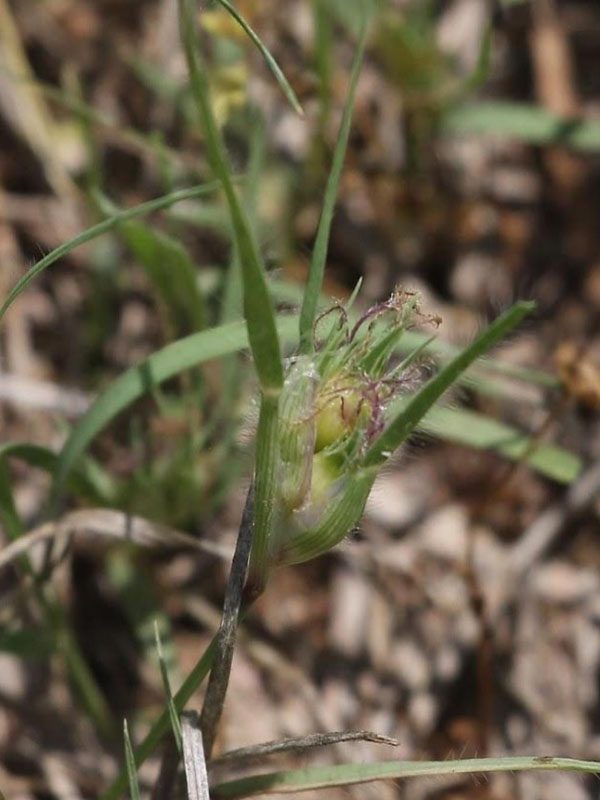

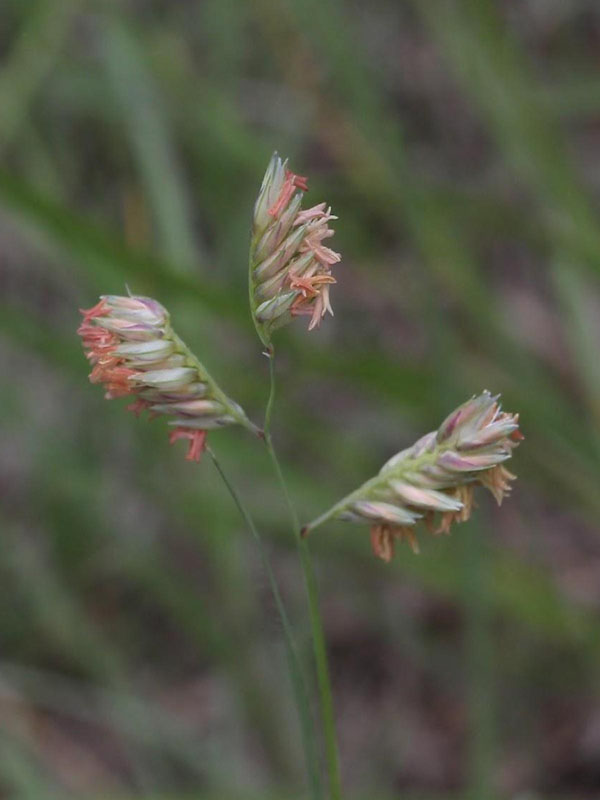





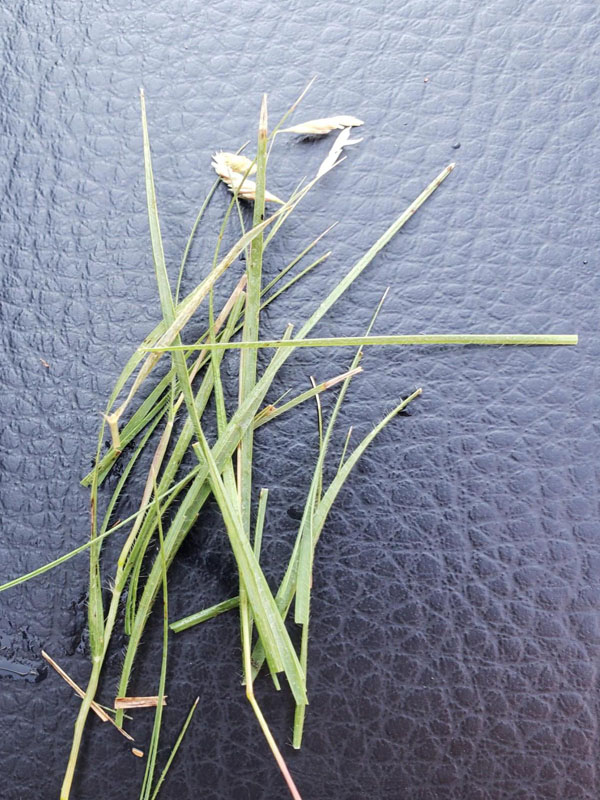

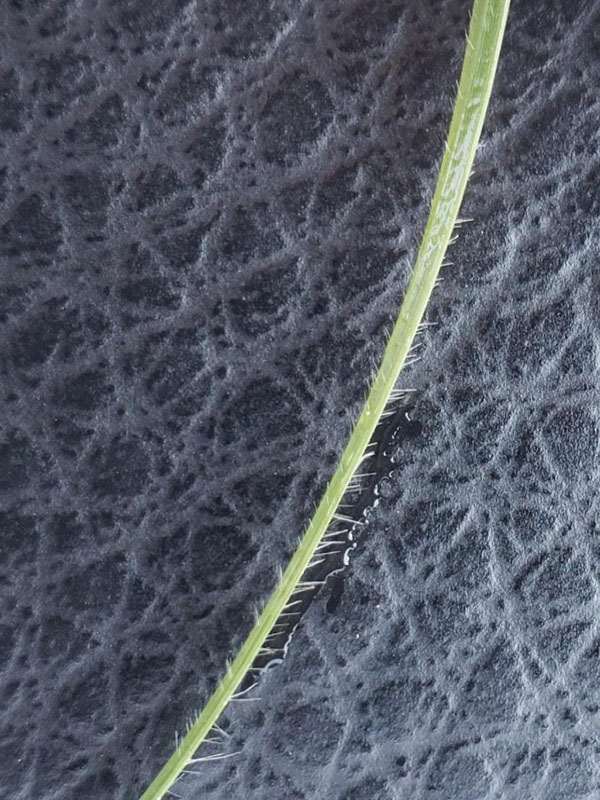

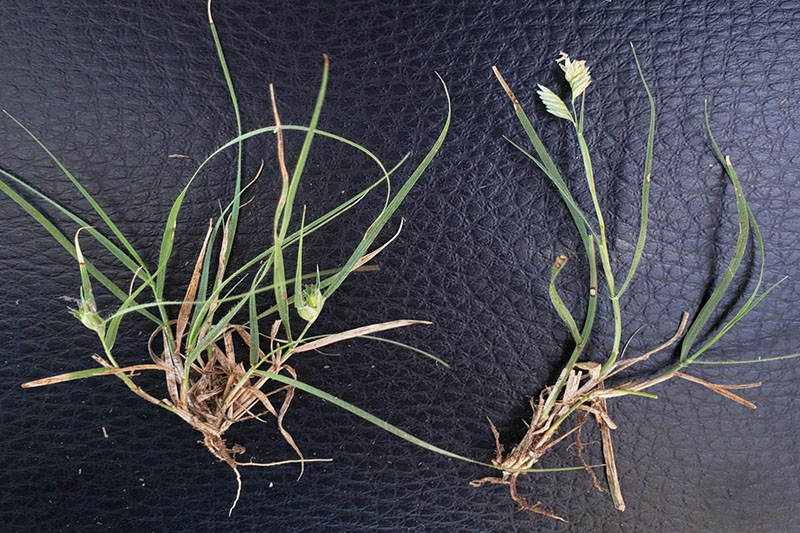

| Plant Facts | |
|---|---|
| Origin | Native |
| Duration | Perennial |
| Season | Warm |
| Distribution in the U.S. | From Montana and the Dakotas southward into Mexico and Central America |
| Distribution in Oklahoma | Western two-thirds and dry sites in the eastern half |
ID Characteristics
- Field Identification Characteristics
Vegetative
- Very short, less than 6 inches tall
- Stolons naked and wiry
- Gray-green foliage
- Leaves usually have hair on top and bottom surface
Floral
- Separate male and female plants (dioecious)
- Male has seed heads sticking up like flags, 1-3 branches per stem
- Female has small burs hidden within blades
- Leaf and Stem Characteristics
- Plant Height: 3-25 centimeters
- Ligule Type: Ciliate
- Sheath: Glabrous
- Leaves: Cauline
- Floral Characteristics
- Inflorescence Type: Spike (male); bur (female)
- Florets Per Spikelet: 2
- Glumes: Unequal
| Habitat/Ecology | |
|---|---|
| Soil Type | Loamy-clay soils |
| Habitat | Intermittently wet or dry soils |
| Successional Stage | Mid to late |
| Uses/Management | |
|---|---|
| Grazing | One of the most important forage grasses of the shortgrass and mixed-grass prairies. All classes of livestock graze it during all seasons. The foliage is nutritious and palatable when green, and nutritional quality does not decline much as it cures. Palatability is good for cattle, domestic sheep, and horses, but utilization may vary by region and year. Digestible protein among cattle, sheep, goats, and horses is between 2.7-2.9%. Highly resistant to grazing, usually increasing under heavy grazing, although response to grazing can vary by site. Buffalograss is highly drought resistant, although somewhat less than blue grama. Buffalograss seed is commercially available. Guidelines for seeding onto rangeland and establishing it from cut sod are available. |
| Wildlife | Provides forage for many species of songbirds and snow geese. Pronghorn antelope, prairie dogs, bison and less frequently white-tailed deer may graze the plants as well. Larval food source for the green skipper butterfly. |
Topics:
